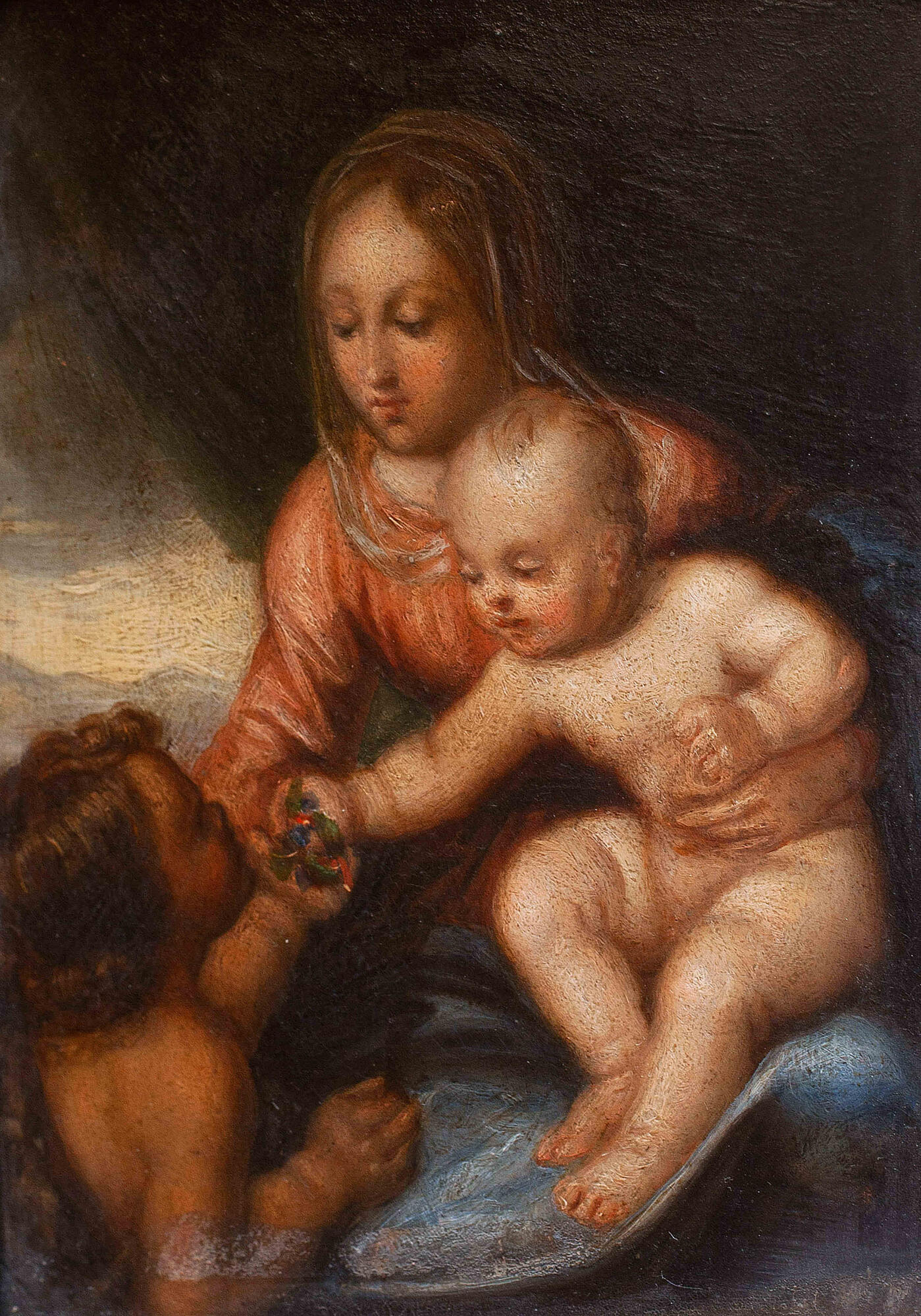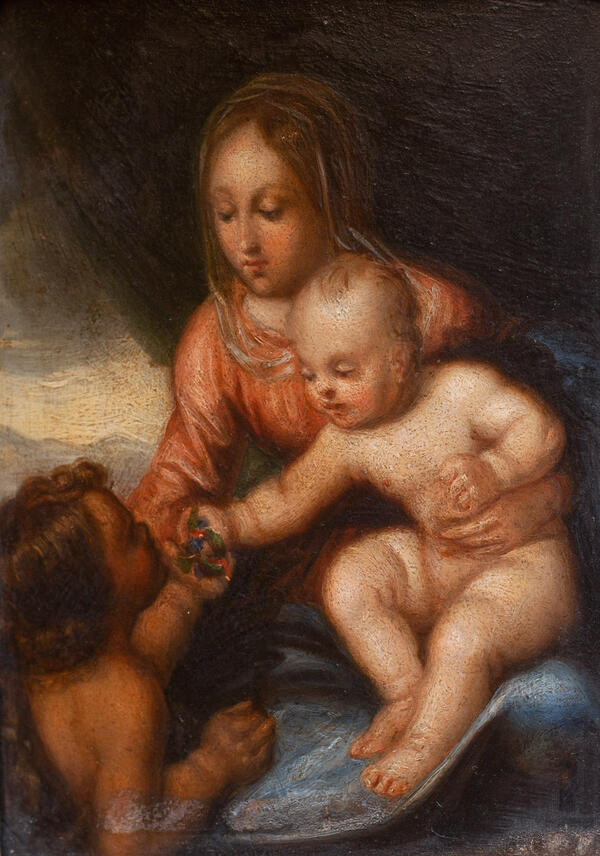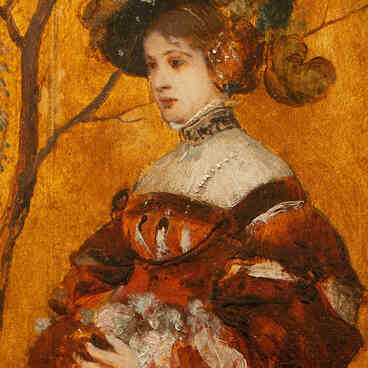Nikolai Semyonovich Golovanov’s collection contains a work of an unknown Italian master of the first half of the 18th century called “Madonna and Child”. There is no certain information on how the painting came to be in the conductor’s collection. Nikolai Golovanov might have acquired it during one of his many trips abroad.
The Madonna and Child with John the Baptist are one of the most common images in the Bible. Interestingly enough, in this painting, John is depicted not as a mature bearded man (the way the Gospels describe him) but as a baby, a little older than Jesus. This drastic change was not mentioned in the New Testament; instead, it first appeared in paintings of the Italian Renaissance. The hagiographic explanation for that went as follows: while the Holy Family was living on the banks of the Nile after fleeing to Egypt, Christ’s second cousin John was carried there from the desert by an angel to meet his relatives. In the traditional iconography guides, John’s appearance is described the following way, “Jewish, middle-aged, his body and face are very thin, has a slightly swarthy complexion, his beard is black and shorter than medium-length, divided into strands or braids, his hair is black, thick, and curly, also divided into strands; he is wearing clothes of coarse camel’s hair, that look like a sack, with a leather girdle.” Scholars agree that John could be a historical figure. The authors of the four canonical gospels all mentioned John, as did the Jewish historian of the 1st century AD Josephus in “The Antiquities of the Jews”.
In this miniature, the artist glorified sincere and idyllic motherly love, the image of an affectionate and gentle mother protecting her child: the Virgin Mary holds Baby Jesus and gives a tender look to the little John the Baptist. The geometric arrangement of figures on the canvas creates an atmosphere of a special and sacred moment. The small size of the study, the center composition, and the soft and smooth outlines of chiaroscuro enhance the intimacy of what is happening and intensify the personal perception of the plot. John holds a reed cross. He accepted Christ as the Messiah and revered him as the Redeemer when Jesus was still a child, so most often artists depicted Baby Christ accepting the reed cross from John, which symbolized his future sufferings.
The Madonna and Child with John the Baptist are one of the most common images in the Bible. Interestingly enough, in this painting, John is depicted not as a mature bearded man (the way the Gospels describe him) but as a baby, a little older than Jesus. This drastic change was not mentioned in the New Testament; instead, it first appeared in paintings of the Italian Renaissance. The hagiographic explanation for that went as follows: while the Holy Family was living on the banks of the Nile after fleeing to Egypt, Christ’s second cousin John was carried there from the desert by an angel to meet his relatives. In the traditional iconography guides, John’s appearance is described the following way, “Jewish, middle-aged, his body and face are very thin, has a slightly swarthy complexion, his beard is black and shorter than medium-length, divided into strands or braids, his hair is black, thick, and curly, also divided into strands; he is wearing clothes of coarse camel’s hair, that look like a sack, with a leather girdle.” Scholars agree that John could be a historical figure. The authors of the four canonical gospels all mentioned John, as did the Jewish historian of the 1st century AD Josephus in “The Antiquities of the Jews”.
In this miniature, the artist glorified sincere and idyllic motherly love, the image of an affectionate and gentle mother protecting her child: the Virgin Mary holds Baby Jesus and gives a tender look to the little John the Baptist. The geometric arrangement of figures on the canvas creates an atmosphere of a special and sacred moment. The small size of the study, the center composition, and the soft and smooth outlines of chiaroscuro enhance the intimacy of what is happening and intensify the personal perception of the plot. John holds a reed cross. He accepted Christ as the Messiah and revered him as the Redeemer when Jesus was still a child, so most often artists depicted Baby Christ accepting the reed cross from John, which symbolized his future sufferings.



